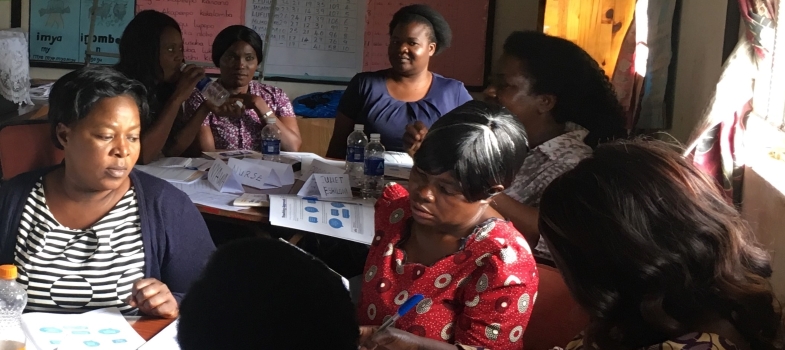Training guide
3. Eliciting prior knowledge
3.1. Brainstorming
You can get your learners to do a brainstorming activity as a whole class or in groups. To set up a good brainstorm, it is essential to have a word, question or problem that the group is likely to respond to. For example, in a lesson on transport you could ask, ‘Who has been to Lusaka?’ and ‘How did you get there?’ Choose a learner to capture the responses on the board – bus, car, train – then extend to other forms of transport. How do you get to school – bicycle, motorbike, truck etc. This technique can be applied to any topic.
Think about how to use the results of the brainstorm. The information gathered from learners through a brainstorm can be used in many subject areas. You could display it and re-visit when you have finished the topic or ask children to organise the ideas into a mind map.
In very large classes, questions used for a brainstorm activity can be different for different groups. Groups should be as varied as possible in terms of gender and ability. Each group (of between six and eight learners) needs to have a large sheet of paper that all can see. The ideas of the group need to be recorded as the session progresses so that everyone knows what has been said and can build on or add to earlier ideas. Every idea must be written down, however unusual. Before the session begins, the following rules are made clear:
- everyone in the group must be involved (remember to assign roles to different group members)
- no one criticises anyone else’s ideas or suggestions
- unusual and innovative ideas are welcomed
- lots of different ideas are needed
- everyone needs to work quickly. Brainstorming is a fast and furious activity.
Activity 3.4: Stages in learning processNellie has begun teaching her Grade 4 class about forces (Topic 4.5 in the science curriculum) and wants to get them to think about the concepts of ‘pull’, ‘push’ and ‘twist or turn’. Listen to the audio or read classroom example 3.2 as she explains how she helps her students do this. As you do so, write down the various steps or stages in the process in your Teacher Notebook. |
Classroom Example 3.2: Brainstorming force action words to elicit knowledgeAudio transcript: Over the past two weeks, I have been collecting pictures and objects that illustrate different types of force action, drawing resources from around my home and school environment. For example, I have a screwdriver to demonstrate how to ‘screw’, and a sheet of ripped paper to visually show the meaning of ‘tear’ and ‘rip’. I begin the class by demonstrating and eliciting the three key verbs (pull, push, twist). Most of the learners are familiar with these words although a few are not sure of ‘twist’. Once I have demonstrated and asked them to show me physically what it means, I write the three words on the board. We then do a brainstorm activity where I ask my learners to call out all the action words they can think of. I make three ‘word spiders’ on the board - one for each of the three verbs (push, pull and twist). We begin by using words in their home language and then move onto English. I find using mime to demonstrate meaning is really helpful, and I check with them whether each suggestion they offer is a push, pull or twist verb to check their understanding. Finally, I put all the pictures and objects I have collected on a table and ask the learners to label them with an appropriate verb and put them into three groups – one for push, one for pull and one for twist types of force. |
|
Did you notice...
|
